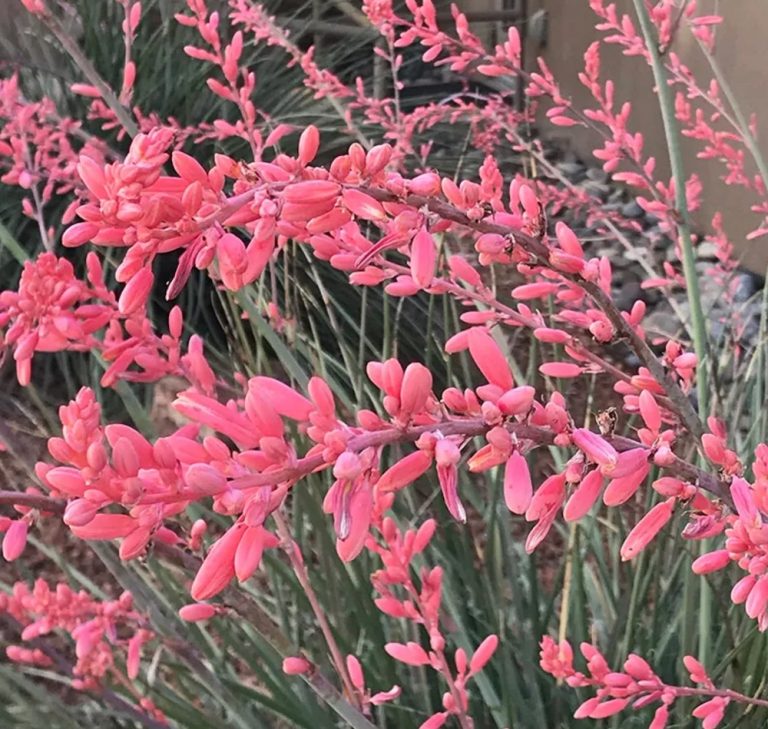Shrubs that are Drought Tolerant
Shrubs that are drought tolerant are shrubs that withstand periods of little to no rainfall or watering. In actuality, this happens once the plant has been established. In other words, the plant or shrub root system takes hold of the surrounding soil. Once the shrub settles into its new surroundings, it stabilizes. Over time, it will show signs of new growth such as new leaves or branches and later bloom if it is a flowering shrub.
Because of the size of shrubs being much larger than perennials, shrubs can take a while longer to settle into their new garden area. Most importantly when planting a new shrub, is to follow the grower’s planting tab instructions. And of course, follow the subsequent care information as well. Many growers recommend watering shrubs twice weekly, from the first through the second year. And only skipping waterings when the shrub receives a good amount of rainfall in a given week. One way to facilitate the transition of plants and shrubs in the ground, is to select drought tolerant plants and shrubs. As an example, the Lion’s Tail shrub is one that does more blooming with less watering. Although Lion’s Tail is not a native plant, it performs magnificently in some gardens.

Save Time and Money with Plants that are Drought Tolerant
If you are interested in shrubs that get by with less water yet deliver incredible results, take a look at our list of drought tolerant shrubs. With these shrubs, you can have a beautiful blooming garden and not spend a lot of time or money on the garden.
There are many reasons plants and gardens can’t be watered regularly. Some reasons are due to cost, water restrictions, lack of time or water. Whatever the reason, these shrubs that are drought tolerant provide your garden with color. Take a look.
-
Lupinus arboreus Yellow Coastal Bush Lupine

Yellow Coastal Bush Lupine – Lupinus arboreus
- California coastal native
- Grows in zones 7 to 10
- Full Sun
- As the yellow lupine reaches maturity, it stands 4 feet tall and wide
- Sweetly scented floral spikes that are 6 to 8 inches long, the Yellow Coastal Bush Lupine blooms from Spring through midSummer
- Regularly visited by pollinators including bees, butterflies, hummingbirds, and wildlife
- Resistant to deer
- Fire Resistant
- Design beautiful cut floral arrangements using yellow lupine floral spikes
- Once established, tolerant of hot dry sites and drought weather conditions
- Low to average water needs
- Re-seeds
2. Lepechinia bella – Shrubs that are Drought Tolerant

Waterwise Lepechinia bella
- Grows in zones 8 to 10
- Part shade and part Sun to full Sun
- At maturity, Lepechinia bella reaches 3 to 4 feet tall and wide
- Sweetly mint scented, the vibrant cornflower blue flowers are 10 inches long which bloom from mid Summer to early Fall
- With its 3 inch long lance-shaped leaves, Lepechinia bella is an attractive shrub for any garden
- Routinely visited by pollinators such as bees, and hummingbirds
- Resistant to deer
- Tolerant of hot dry, and drought weather conditions
- Evergreen
- Low to average water requirements
Note: Not only is Lepechinia bella related to Salvia but it is from Bolivia.
3. Bells of Fire Tecoma – Shrubs that are Drought Tolerant
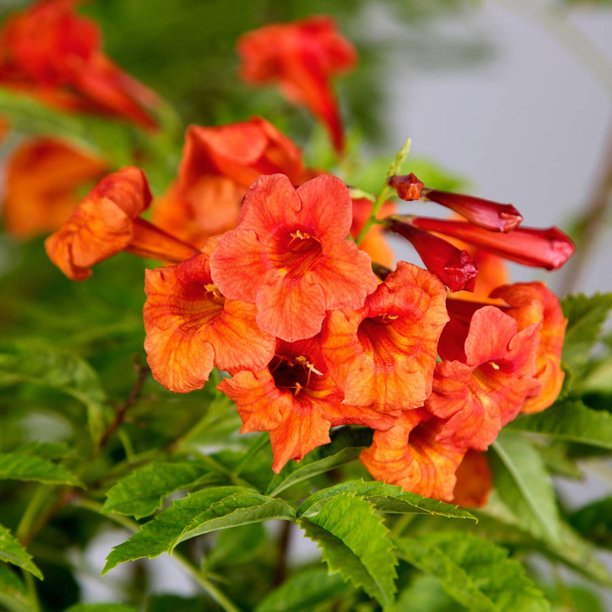
- Grows in zones 8 to 11
- Full Sun
- As Bells of Fire matures, it reaches 5 to 6 feet tall by 5 feet wide
- Brightly colored bell-shaped fiery orange-red flowers bloom from Spring until the first frost
- Routinely visited by pollinators such as butterflies and hummingbirds
- Once established, tolerant of heat and drought weather conditions
- Continuously re-blooming compact shrub with evergreen foliage
- Plant along garden borders, as an accent plant or grow in containers
- As a result of its tropical appearance, Bells of Fire adds a brightness to the garden
4. Dombeya burgessiae Pink Form
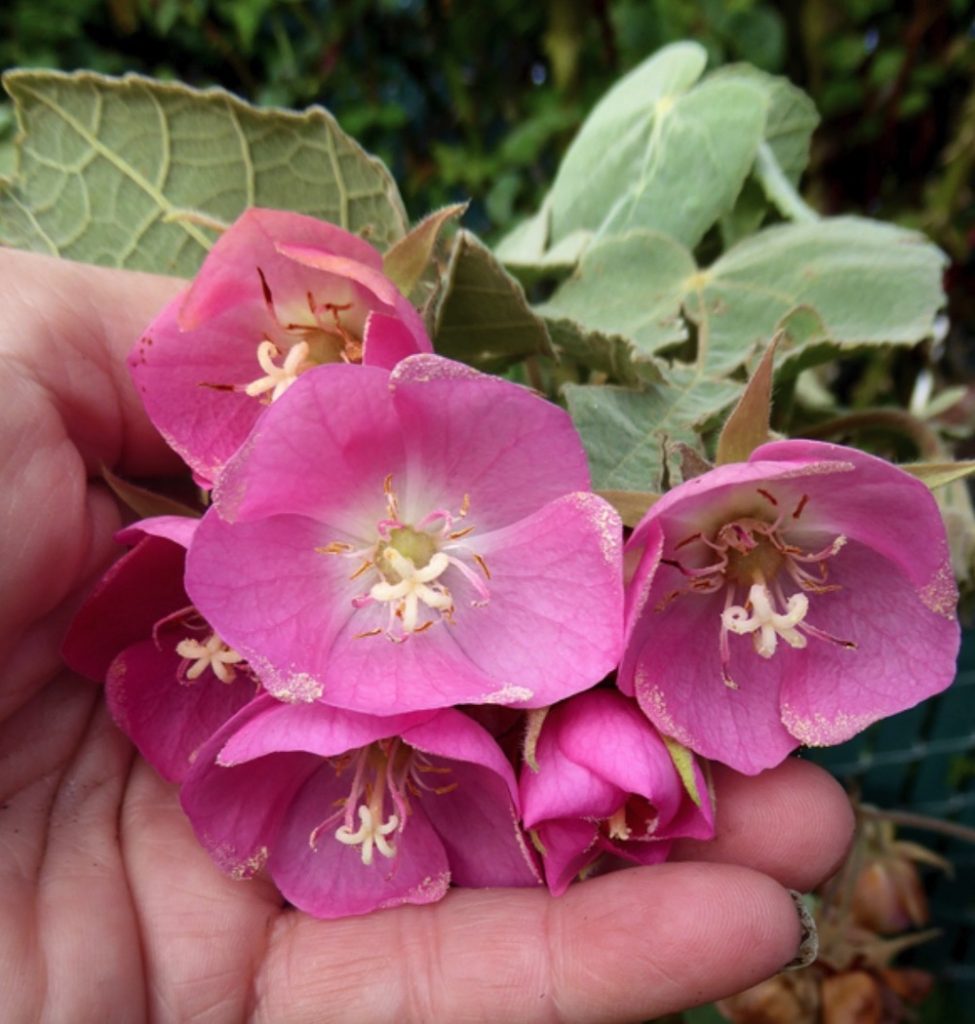
- Grows 9b to 11
- Part shade and part Sun to full Sun
- As it approaches maturity, Pink Form reaches 10 feet tall and wide
- Fragrantly scented with deep magenta-pink cup-shaped flower clusters appear from April through August
- Time and again visited by pollinators such as bees, butterflies, and hummingbirds
- Resistant to deer
- Once established, it is tolerant of shade, and drought weather conditions
- Easily grown in containers
- Low to average water needs
- As a result of its sage green maple-like leaves, Pink Form adds a tropical look to the garden
5. Leonotis leonurus Lion’s Tail
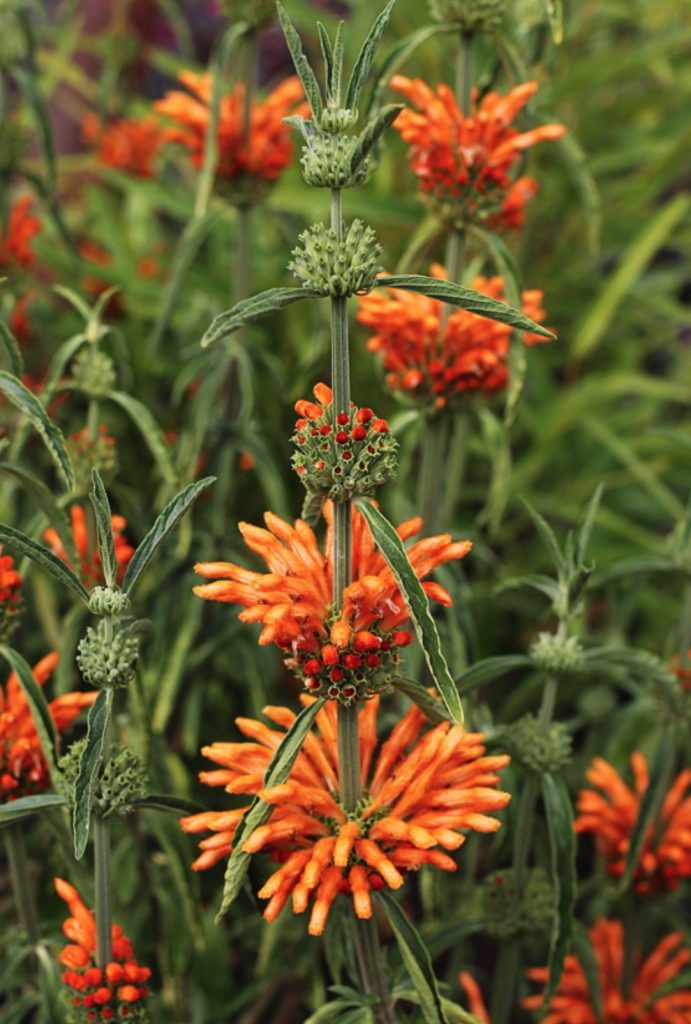
- Grows in zones 8b to 11
- Full Sun
- As it matures, Lion’s Tail reaches 4 to 6 feet tall and wide
- Strikingly beautiful orange-red fuzzy tubular whorls of flowers bloom from Summer through Fall
- However, in climates such as the California coastline, Lion’s Tail blooms year round
- Customarily visited by pollinators, Lion’s Tail will see bees, butterflies, and hummingbirds
- Resistant to deer
- Extraordinarily beautiful, the South African flowers can be used in floral bouquets
- Once established, tolerant of heat and drought weather conditions
- Fast growing evergreen has deep green lance shaped leaves
- Low to average water needs
6. Echium gentianoides Tajinaste

- Grows in zones 9 to 10
- Full Sun
- As it reaches maturity, Tajinaste reaches 4 feet tall and wide
- True cerulean blue cup-shaped flowers pop from pink buds above the blue-grey foliage of the Tajinaste shrub
- Continuously blooming that begins from Spring and doesn’t cease until the Fall
- As a result of the non-stop flowering, Tajinaste is visited by pollinators such as bees, hummingbirds, and wildlife
- Resistant to deer
- Once established, Tajinaste tolerates heat, hot dry sites, and drought weather conditions
- Low to average water needs
- Easy Re-seeders
Note: Although Echium originates from La Palma in the Canary Island, it is extremely rare and endangered. The true cerulean blue flowers pop from pink buds in loose pyramidal spikes.
7. Lydia Tecoma – Shrubs that are Drought Tolerant

- Grows in zones 8 to 11
- Full Sun
- At maturity, Lydia Tecoma reaches 5 to 6 feet tall and 5 feet wide
- Brightly colored yellow bell-shaped flowers bloom from Spring until the first frost
- A compact evergreen shrub with light tropical-like foliage
- Routinely visited by pollinators such as butterflies and hummingbirds
- Easily grown in containers and plant along garden border
- Once established, Lydia is tolerant of heat and drought weather conditions
8. Vitex agnus-castus Blue Diddley

Vitex agnus-castus Blue Diddley
- Commonly known as Dwarf Chastetree
- Grows in zones 5 to 9
- Full Sun
- As it matures, Vitex Blue Diddley reaches between 3 to 6 feet tall
- Calming lavender-blue floral spikes bloom from early to late Summer
- Floral spikes reach 10 to 12 inches long
- Frequently visited by pollinators including butterflies and hummingbirds
- Resistant to deer
- Once established, Blue Diddley is tolerant of salt, hot dry site, and drought weather conditions
- In addition to planting Blue Diddley as a hedge shrub, the 10 to 12 inch floral boughs can be used in floral bouquets
An excellent xeric shrub, however it is not suitable for gardens in Texas or Louisiana.
9. Salvia cacaliifolia Guatemalan Leaf Sage
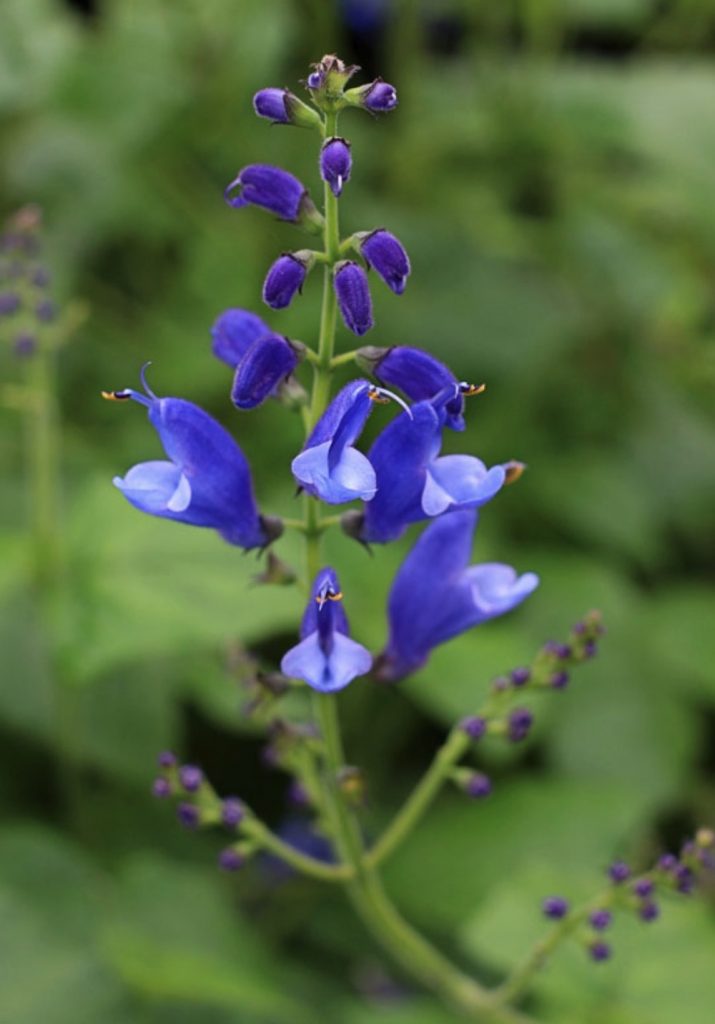
Guatemalan Leaf Sage Salvia cacaliifolia
- Grows in zones 8 to 11
- Part shade and part Sun to full Sun
- As the Leaf Sage Salvia reaches maturity, it tops out at 4 feet high
- Vividly colored royal blue flower spikes stand 1-2’ above the foliage and bloom from Summer until the first frost
- Frequently visited by hummingbirds
- Resistant to gophers
- Once established, tolerant of shade, hot humid, and drought weather conditions
- Along with growing Leaf Sage Salvia in a container or as a ground cover, the royal blue floral boughs make great floral bouquets
- Average water needs
10. Anisodontea sp. Strybing Beauty

Anisodontea sp. Strybing Beauty
- Grows in zones 9b to 10
- Part shade and part Sun to full Sun
- As Strybing Beauty matures, it reaches 6 feet tall and wide
- Showy cherry-eyed pink Hollyhock-like flowers 3 inch wide that bloom year round
- One of the best pollinator shrubs with fig leaf foliage
- Regularly visited by pollinators such as bees and butterflies
- Once established, tolerant of hot dry site and drought weather conditions
- Average water needs
11. Cheyenne Mock Orange – Plants that are Drought Tolerant

- Native
- Grows in zones 3 to 9
- Morning Sun and afternoon shade to Full Sun
- At maturity, Cheyenne Mock Orange tops out at 6 to 9 feet high and 5 to 8 feet wide
- Fragrantly citrus scented white blooms appear in late Spring
- Time and again visited by pollinators such as bees, and others
- Easily grows in sandy, average, dry, and compost enriched loam soil Conditions once established, Cheyenne tolerates dry and drought conditions – a water wise shrub
For adding color to your garden, plant drought tolerant perennials and shrubs. Especially if you’d rather be relaxing than watering your garden. Always a solution for the frugal gardener, drought tolerant plants saves you money. Your garden will look amazing and of course, it’ll save you time as well.
Interested in gardening? If you found this helpful . . .
You May Also Enjoy some of our other gardening related posts.
Plants that are Drought Tolerant
50 Sandy Soil Perennials that Like Sun
23 Fall Blooming Plants for Pollinators
18 Hardy Chrysanthemums to Plant Now for Fabulous Fall Color
And if you have any gardening questions, feel free to reach out to us. As always, we are ready to help you out. Please include your zone and sunlight requirements with any garden related questions. Thank you for dropping by.
Mary






